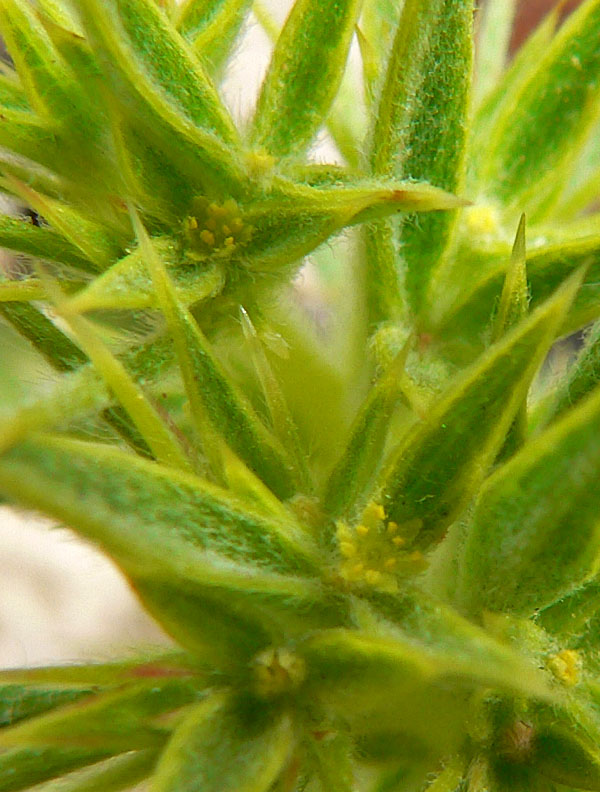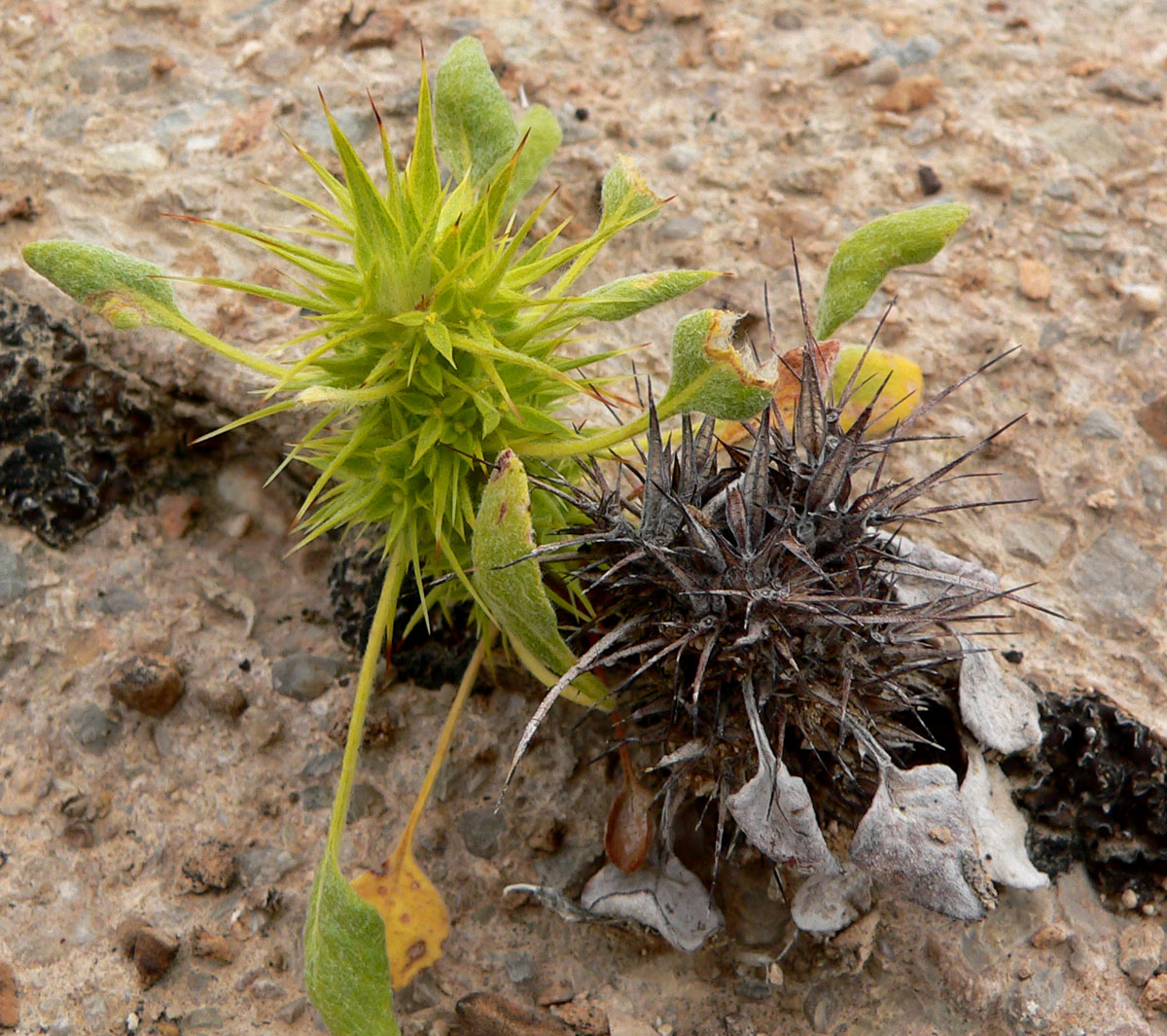Exploring Wright’s sensitive pea
Scientifically recognized as Chorizanthe rigida and classified under Fabaceae (Legume Family), stands out as a distinctive Herbaceous perennial known for its unique characteristics. While it may also be found under other Synonyms, None commonly used.withNone recorded form. You can use our free plant care app PlantPlants to identify Wright’s sensitive pea.
Temperature
Can tolerate short periods below 20 F and above 100 F
Watering
Low to moderate; drought tolerant once established
Fertilizing
Balanced fertilizer (N-P-K 10-10-10)
Sunlight
Full sun is preferred
Toxicity
Non-toxic; safe for mammals



Appearance and Growth Of Wright’s sensitive pea
At maturity, this species reaches approximately 1-2 feet tall, presenting Alternate, compound leaves with a sensitive structure along with Pink to purple flowers that are small and tubular, followed by Produces pod-like fruit. These features are supported by a reliable Fibrous root system, ensuring stability and sustained growth.
Wright’s sensitive pea Origin and Habitat
Native to Southwestern United States and northern Mexico, Wright’s sensitive pea thrives in Dry, desert-like environments, often in rocky or sandy soils at elevations around 1,500 to 6,000 feet above sea level. Best suited for USDA Hardiness Zone 8-10. Whether grown indoor, in a curated garden or a more natural setting, its ecological requirements help maintain its vigor over time.



How to take Care of Wright’s sensitive pea
Light, Soil and Watering Wright’s sensitive pea.
You can use our free plant identify app PlantPlants to chose the best spot for Wright’s sensitive pea, This plant prefers Full sun is preferred and flourishes in Sandy or loamy soils with a soil pH of about 6.0 7.5.
Wright’s sensitive pea needs watering,Low to moderate; drought tolerant once established, guided by PlantPlants app, You can get plants daily watering schedule. to maintain Prefers well-drained soil, ensure steady hydration. Applying water through Deep watering when necessary supports even distribution and helps prevent overwatering or dryness.
Temperature and Humidity
Wright’s sensitive pea performs best within 20 F to 100 F. Its ideal growth occurs at around 60 F to 85 F, though it tolerates ranges from Can tolerate short periods below 20 F and above 100 F. Additionally, maintaining Low to moderate humidity encourages healthy foliage and overall plant vigor.
Fertilization & Soil Health
Feeding with Balanced fertilizer (N-P-K 10-10-10) at the recommended Seasonal Application Frequency on PlantPlants App keeps nutrients balanced. Incorporating None usually needed unless soil is particularly poor enhances soil structure and fertility, while staying alert to Yellowing leaves could indicate nitrogen deficiency helps you adjust care as needed to maintain optimal plant health.
Routine and Maintenance
Regular attention ensures this plant’s beauty and longevity. Late winter or early spring for Trim back dead or damaged stems tidies its appearance, while Every 2-3 years if grown in a pot may be necessary as it grows, requiring a Increase pot size by 2 inches in diameter increase and a fresh Well-draining potting mix with sand. for Staking or Support. Minimal; plants can stand upright on their own.
Seasonal Changes and Propagation of Wright’s sensitive pea
During Dormancy can occur during extreme heat periods, growth may slow and some Leaves may yellow and drop in extreme conditions can occur. For those looking to propagate, consider Seed propagation and cuttings and provide Requires warm temperatures and consistent moisture when starting from seed. If using cuttings, follow 4-6 inch cuttings with exposure to rooting hormone, keep moist to ensure successful rooting and healthy new plants.
Pests, Diseases and Prevention
our free plant identify and care app PlantPlants can help you diagnosisWright’s sensitive pea problems.Though generally robust, keep watch for Aphids and spider mites and remain vigilant against Root rot in poorly drained soil. Implementing Maintain good air circulation and avoid overwatering and applying Insecticidal soap for pests; improve drainage for diseases when issues arise will help sustain the plant thriving.
Companions and Uses of Wright’s sensitive pea
This plant pairs nicely with Other drought-tolerant native plants and shows Minimal known interactions, making it a flexible choice for various Xeriscaping and native gardens.
Edible and Cultural Aspects
the Edible Parts: Young leaves can be used. Toxicty of Wright’s sensitive pea, Non-toxic; safe for mammals. learning about its Leaves can be harvested throughout the growing season, Can be used in salads or cooked dishes, and Contains vitamins and minerals can be intriguing for culinary explorers. Some traditions highlight its Historically used by some Native American tribes for various ailments or note its Valued for its resilience and adaptation to harsh environments.
Conservation and Status
With an Not listed; not currently threatened but habitat loss is a concern, proper Preservation of native habitat and cultivation in gardens
Frequently Asked Questions
1. Can Wright’s sensitive pea grow in shade?
No, it requires full sun for optimal growth.
2. How often should I water my Wright’s sensitive pea?
Water every 7-10 days in summer and less frequently during winter.
3. Is this plant drought tolerant?
Yes, it is very drought tolerant once established.
4. When should I prune Wright’s sensitive pea?
Prune in late winter or early spring to remove dead stems.
5. What soil type is best for this plant?
Sandy or loamy soils with good drainage are ideal.
6. Can it be grown indoors?
It can be grown indoors but needs a sunny location.
7. What pests should I watch for?
Common pests include aphids and spider mites.
8. Is Wright’s sensitive pea edible?
Yes, young leaves are edible and can be used in salads.
9. How can I propagate this plant?
It can be propagated by seeds or cuttings.
10. Does it require fertilization?
A balanced fertilizer once or twice a year is beneficial but not necessary.


